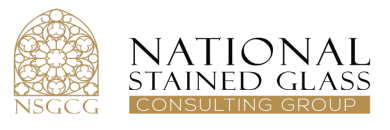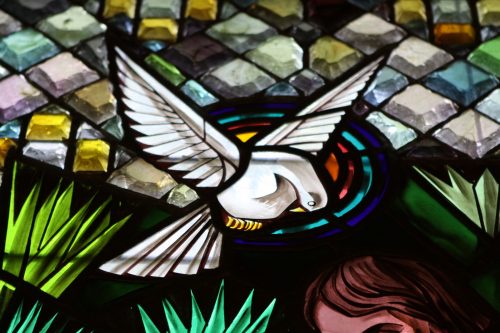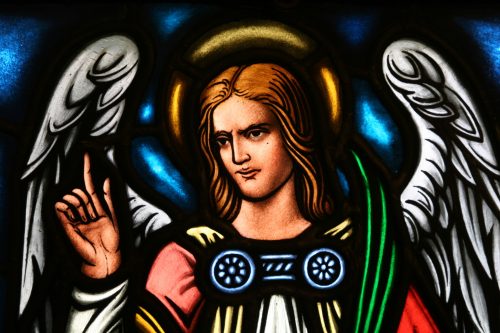NSGCG offers complete and comprehensive specifications for the historical restoration of stained glass windows to ensure your windows are properly preserved.
There is a difference between releading a stained glass window and a true historical restoration. A releading is basically the swapping out of the lead matrix, while the true historical restoration can also include releading, there is much more involved to make it a historical restoration.
A proper historical restoration starts well before any stained glass windows are removed. Research should be done to gather any available information and history on the windows. This should include manufacturing studio, artist, designs or sketches and any records and information on previous repairs, restorations and past maintenance.
The next step should be a thorough and comprehensive survey of each window to document all structural and aesthetic components. Broken, cracked or missing pieces of glass and their locations, flaking or delaminated painted glass, lead lines or cross hatching, previous replacement glasses and any obvious previous repairs.
Any and all structural components need to be thoroughly documented from the lead matrix, reinforcing stanchion bars, slip joints, t-bars and to the window frame itself. A proper conservation will also include maintaining as much of the original structural components whenever reasonable.
Comprehensive specifications need to then be created on how to address each structural and aesthetic component. How each piece of cracked or broken glass should be repaired should depend on both structural and aesthetic factors and often can vary from one piece or type of glass to the next. The options for treating cracked or broken glass should include edge gluing, lead lining or copper foiling, and lastly the replacement. The priority should be on preserving the original glass whenever possible to maintain historical accuracy and aesthetics.
When you have faded or delaminated painted glass there are a few options for the proper restoration, first to leave it alone and do nothing, plate painting on a separate overlay to replace the faded areas only, or replacing the piece entirely with a new piece of hand painted glass. Each of these options will affect your stained glass window differently aesthetically and historically. Careful consideration must be given to each method and how it will affect your window.
 All of these areas and more need to be addressed before your windows are touched by any stained glass studio. You should have detailed window diagrams, window and panel numbering and floor plans. Procedures for the removal, reinstallation, the securing and handling of your windows, specifications for the crating and transport and so forth. Specifications and procedures should also include the entire in studio processes to ensure proper handling and preservation.
All of these areas and more need to be addressed before your windows are touched by any stained glass studio. You should have detailed window diagrams, window and panel numbering and floor plans. Procedures for the removal, reinstallation, the securing and handling of your windows, specifications for the crating and transport and so forth. Specifications and procedures should also include the entire in studio processes to ensure proper handling and preservation.
NSGCG experts will represent you in the restoration and conservation of your stained glass windows. With our vast studio experience and knowledge, we will ensure you have the best specifications and procedures in place for your stained glass restoration project. Our project management services will also allow us to monitor a selected studio to oversee the restoration process from on site to in studio.


